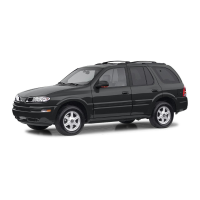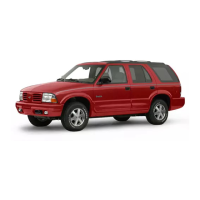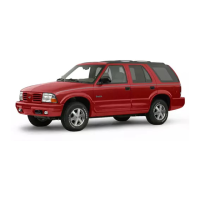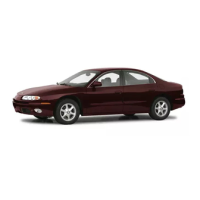Here are some other things to consider as you
approach a hill.
Is
there a constant incline, or does the hill get
sharply steeper in places?
Is
there good traction on the hillside, or will the
surface cause tire slipping?
Is
there a straight path up or down the hill
so
you
won’t have to make turning maneuvers?
Are there obstructions on the hill that can block
your path (boulders, trees, logs or ruts)?
What’s beyond the hill?
Is
there a cliff, an
embankment, a drop-off, a fence? Get out and walk
the
hill
if
you don’t know. It’s the smart way to
find out.
Is
the
hill
simply
too
rough? Steep hills often have
ruts, gullies, troughs and exposed rocks because
they are more susceptible to the effects
of
erosion.
Driving
Uphill
Once you decide you can safely drive up the hill, you
need
to
take some special steps.
Use a low gear and get a firm grip on the steering
wheel.
Get a smooth start up the hill and try to maintain
your speed, Don’t use more power than you
need, because you don’t want your wheels
to
start
spinning or sliding.
4-20
Try to drive straight up the hill
if
at all possible. If
the path twists and turns, you might want to find
another route.
Turning or driving across steep hills can be
dangerous. You could
lose
traction,
slide
sideways, and possibly roll over. You could be
seriously injured or killed. When driving up
hills, always try to go straight up.
Ease up
on
your speed as you approach the top
of
the hill.
Attach a flag to the vehicle to make you more
visible
to
approaching traffic on trails or hills.
Sound the horn as you approach the top
of
the hill
to let opposing traffic know you’re there.
Use your headlamps even during the day. They
make you more visible to oncoming traffic.
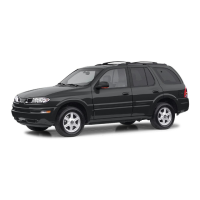
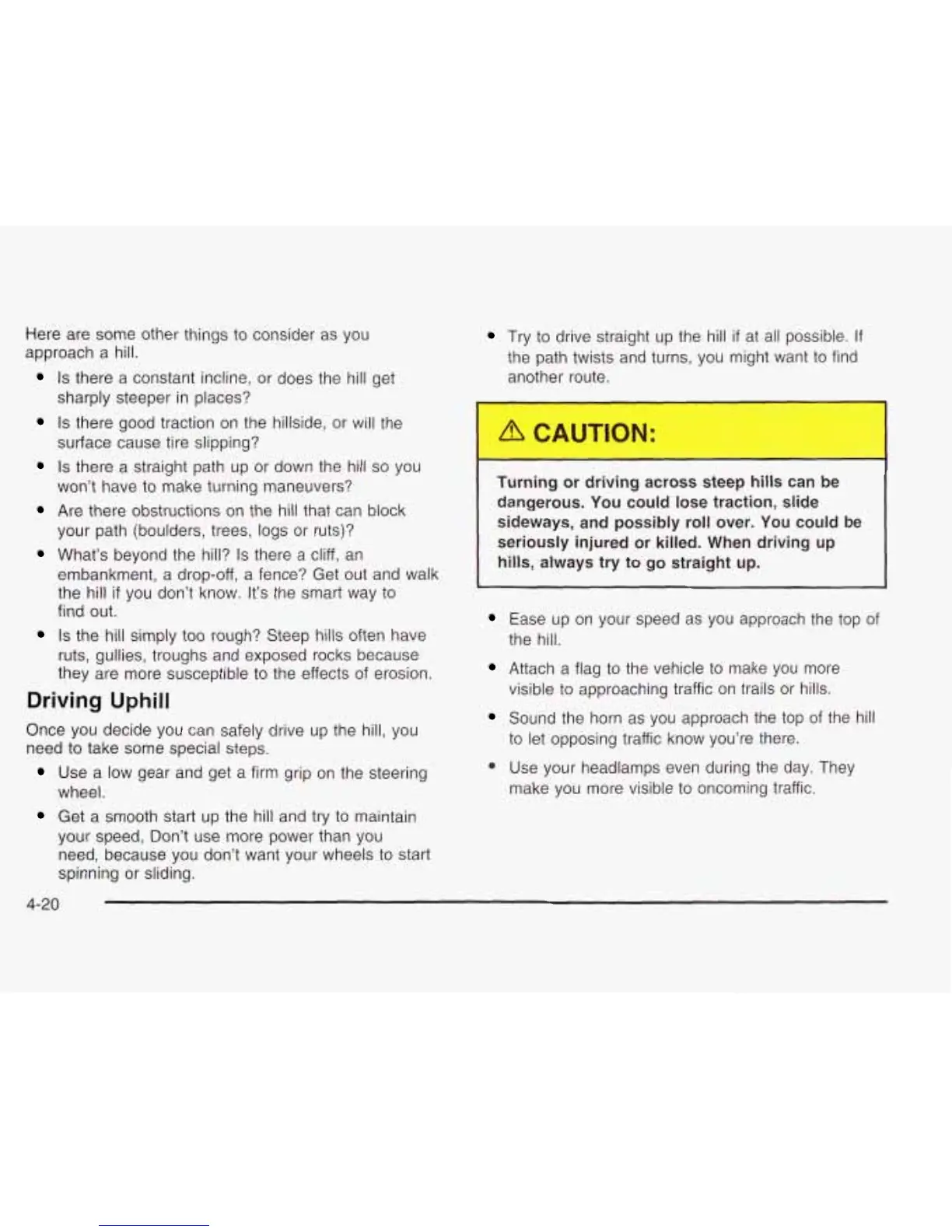